Las Fallas 2025: Your Ultimate Festival Guide to Valencia’s Boisterous Pyrotechnic Festival: History, Events, and Tips
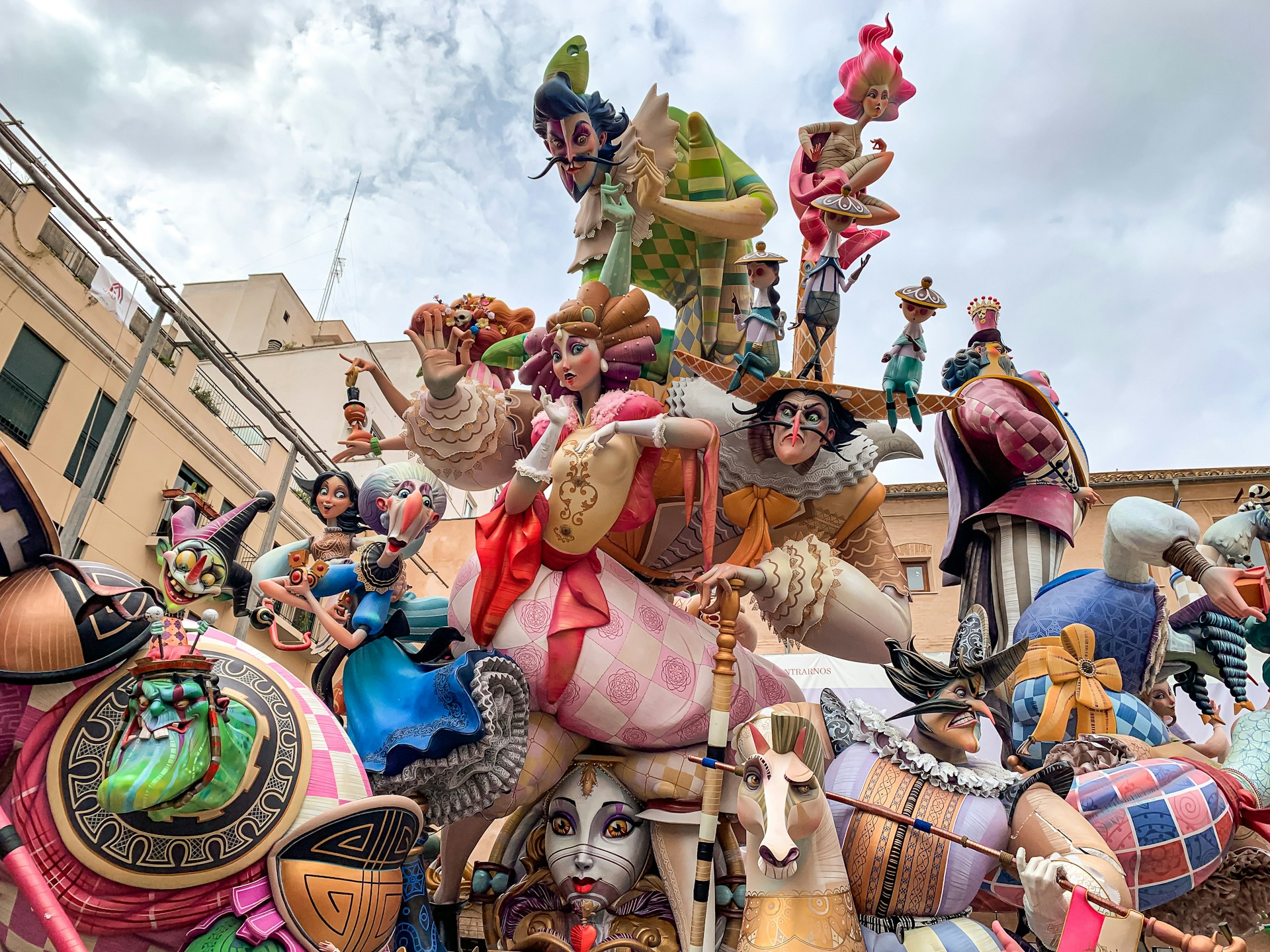
Is it March yet? Happy (almost?) March, and Happy Fallas (pronounced “Fah-Yahss”)! In this article, you’re going to get the lowdown and the insider tips you need to be an expert–and enjoy the multi-day festival to the fullest.
It may not be fair to say this, but you do have to experience Las Fallas to understand the depth of this multi-sensory celebration. Before you arrive to Valencia in person, it’s important to read up on all the spectacular events you’ll be able to experience. In this article, you’ll get all the fiery details on this bombastic festival celebrated every March in Valencia.
Imagine being surrounded by towering character sculptures, the smell of paella (“pah-aey-ya”) in the air, and fireworks exploding overhead. The music pumps through the loudspeakers. Brass bands march to the beat of their drummers. And little kids throw firecrackers at your feet.
Las Fallas is one of Spain’s most unique and explosive festivals.
You’re going to get the lowdown on the history, the major must-see events as well as our most coveted insider tips on how to enjoy the festival like a local.
If the Fallas fest is not already on your travel bucket list, it soon will be. Let’s get straight into all the fun and madness.
Table of Contents
- Introduction: Embrace the Explosive Energy of Las Fallas
- What Is The Festival of Las Fallas?
- A Brief (and Wild) History
- What You’ll Experience at the Fallas
- The Fallas Sculptures (Ninots)
- La Cremà (Final-Night Burning of the Ninots)
- Mascletà (Firecracker Symphony)
- La Nit del Foc (The Night of Fire)
- Parades, Costumes, and Traditional Dress
- Flower Offerings to La Virgen de los Desamparados
- Music Here, Music There, Music Everywhere
- Practical Tips for First-Time Visitors
- Why You Shouldn’t Miss Las Fallas
- Sustainability, Controversy, and the Future of Las Fallas
- FAQ: Your Ultimate Guide to Surviving Las Fallas!
What Is The Festival of Las Fallas?
Las Fallas is a harbinger of Spring and a celebration of art, full of satire and merriment, that takes place in the city of Valencia every March. Many pueblos and other cities around Valencia also have a local version of Fallas.
The main days for maximum loudness and revelry are from March 15 to 19, but the daily fireworks display in the main City Hall square starts on March 1st.
The word “Fallas” means torches or bonfires in Valenciano language. Yep, Valencia has its own language that is sweet to hear. It’s on much of the signage and street names around town. If you know some Spanish you can pick up on it a bit. Like “Bon dia!” is the same as “¡Buen día!” or “Good Day!”
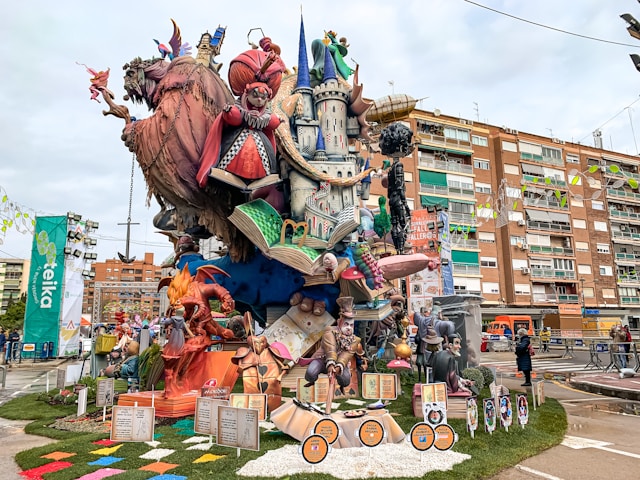
Did you know?
- UNESCO awarded Las Fallas with the Intangible Cultural Heritage recognition.
- Fallas was most recently cancelled in 2020 due to the global pandemic and three years in a row during World War II.
- There are Valencia Bomberos firefighters at the ready for each sculpture burning to add to maximum safety.
Fallas is a major community affair, bringing people together who belong to a local “falla.” A “fallero” or “fallera” is a member of a local neighborhood “falla” that takes part in the preparation and celebration of the Fallas. There are falleros in charge of designing and creating the ninot sculpture, playing music in the parades, and ensuring that the “cremá” burning process goes off without a hitch.
Fallas fest is different from America’s 4th of July, which is subdued in comparison. USA’s Independence Day celebrations may have fireworks for a few days before the 4th, but it does not last nearly as long and intensely as Valencia’s 19-day bash. Fallas is also different from Mardi Gras, although some aspects of the brass band marching are reminiscent of each other.
A Brief (and Wild) History
This amazing celebration has some surprising roots. It started way back when local carpenters had a unique way of doing spring cleaning – by burning their old wood scraps on the day of their patron saint, Saint Joseph's (that's why the big "cremà" fire show is always on March 19th).
These weren't just any old bonfires, though. People started getting creative, arranging the wood into funny scenes that made light of everyday life. Even when the authorities tried to shut things down, the Valencian spirit kept it alive. A magazine even popped up to showcase the best "fallas" (the sculptures), leading to friendly competition and even more amazing creations.
Then, in 1901, the city officially joined the fun, giving out prizes and helping the festival grow bigger and better. Fast forward to today, and Las Fallas is GIGANTE! Every year, over 700 mind-blowing sculptures, big and small, go up around March 15 and then go up in flames across Valencia. Get ready to experience the spectacular events of this unforgettable festival!
Over the years, it has turned into an international spectacle. People from all over the world come to Valencia during March to see the Fallas in action. If you plan to be there, make sure to book your flights and lodging earlier rather than later.
If you’re like me, you can only take so much of the constant fireworks noise and loco nature of big-time festivals, consider booking (early!) a few days outside of Valencia’s capital. Check out spots in the mountains or any of the beach towns along the coast.
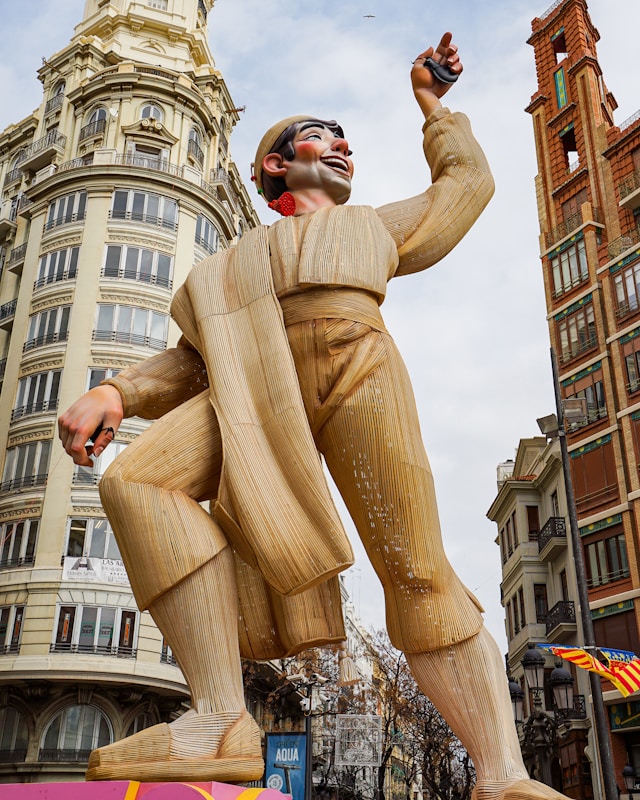
Usually, the weather turns sunny by the time Fallas rolls around, but for example, in 2025, it rained almost the entire festival! The show must go on, and the events still took place, but you should bring some extra layers just in case the weather takes a turn for the chillier and rainier.
Keep in mind that, according to some locals I spoke with, Fallas seems to be just a bunch of private parties scattered throughout Valencia. And if you are not part of a local Falla organization, then you don’t get the VIP treatment. And it’s just not as fun unless you know someone who will get you into their private tent to eat their scrumptious paella.
By the way, my Valencian friends told me that if you want, you can join a falla organization if you live in Valencia. You just have to go and talk to them about becoming a member or fallero/fallera.
However, there are still enough public events that you can take in and photograph. Personally, more than a few days is a lot, so plan accordingly and make your itinerary so that you are taking full advantage of all these events.
Make sure to schedule in some exploring time as well as some rest time. To be honest, it may be hard to sleep your siesta with the fireworks going off. Pack some earplugs so you can catch some shut eye for at least a few hours.
What You’ll Experience at the Fallas
Spain has a flair for over-the-top traditions and celebrations, and Fallas is the quintessential showy festival. Get ready for some exciting times exploring the different parties throughout town. Here are the specific events and must-see traditions you can expect to experience.
The Fallas Sculptures (Ninots)
1. What They Are:
Ninots are larger‑than‑life, cartoon‑style sculptures crafted from wood, paper, or polystyrene. Bursting with satire, humor, and local flair, these playful giants lampoon everything from pop culture to politics, making Las Fallas equal parts art show and stand‑up comedy!
2. Towering Sizes:
Some ninots soar skyward for several stories, transforming city streets into a whimsical sculpture garden. Imagine strolling beneath cheeky caricatures as tall as buildings. Each sculpted detail is a testament to Valencia’s passion for turning everyday commentary into spectacular, larger‑than‑life art.
3. Friendly Competition:
Across Valencia, neighborhood clubs (casales falleros) go all‑in crafting ninots, each vying for top honors. From fledgling artists to seasoned sculptors, communities pour creativity and camaraderie into every piece, fueling one of Spain’s most spirited, colorful competitions!
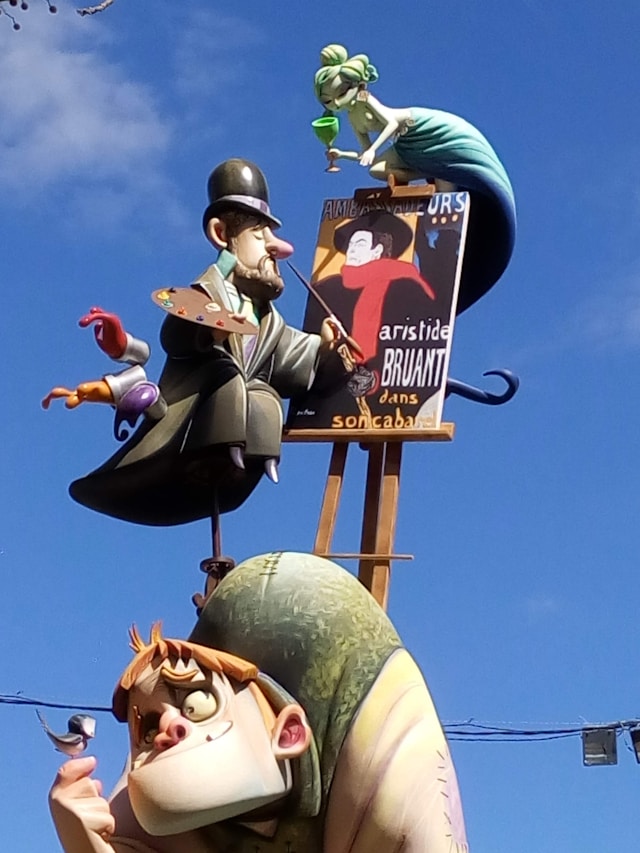
La Cremà (Final-Night Burning of the Ninots)
1. What It Is:
La Cremà is Las Fallas’ grand finale, where every ninot goes up in flames—except the one beloved masterpiece spared by popular vote. It’s a fiery farewell that seals weeks of art, satire, and citywide celebration.
2. Sensory Spectacle:
Under night skies, roaring flames, live music, and cheering crowds create an emotional, cinematic moment. Sparks fly, hearts race, and the warmth of community spirit glows as Valencia bids a dramatic, beautiful goodbye to its towering creations.
3. When It Happens:
Mark your calendar for the late hours of March 19. As the clock ticks past midnight, Valencians gather in every barrio, ready for La Cremà’s synchronized burn—a magical, midnight ritual you’ll never forget.
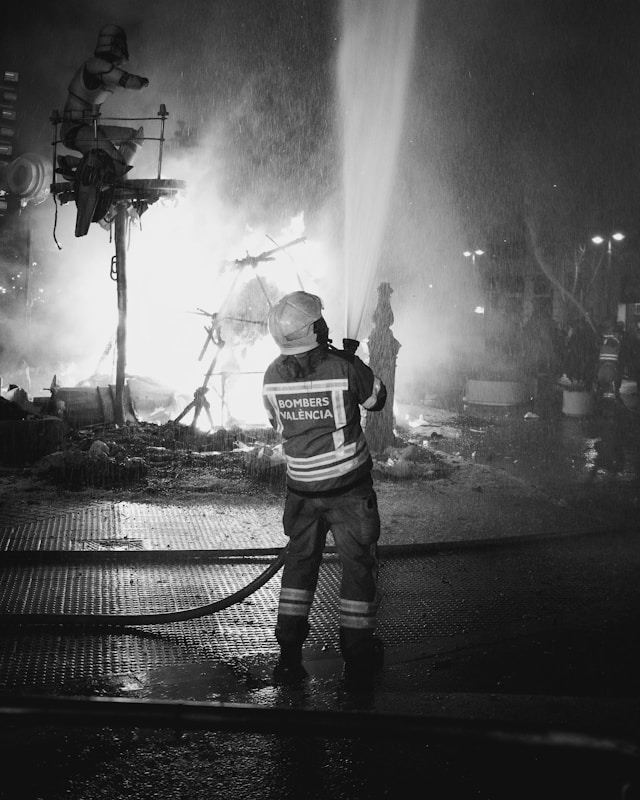
Mascletà (Firecracker Symphony)
1. Daily Ritual:
Every day at 2 PM sharp during Las Fallas, the Plaza del Ayuntamiento erupts with the Mascletà—a thunderous symphony of sound that locals and visitors flock to experience. It’s not a show you watch—it’s one you feel.
2. Sonic Spectacle:
Unlike typical fireworks, the Mascletà isn’t about color—it’s all about rhythm. Carefully choreographed explosions create a percussive masterpiece, where booming beats replace melodies and sound becomes the main spectacle.
3. Sensory Rush:
Expect eye-watering smoke, chest-thumping vibrations, and a crowd buzzing with energy. It’s intense, exhilarating, and 100% Valencian—a wild, daytime adrenaline rush you won’t find anywhere else.
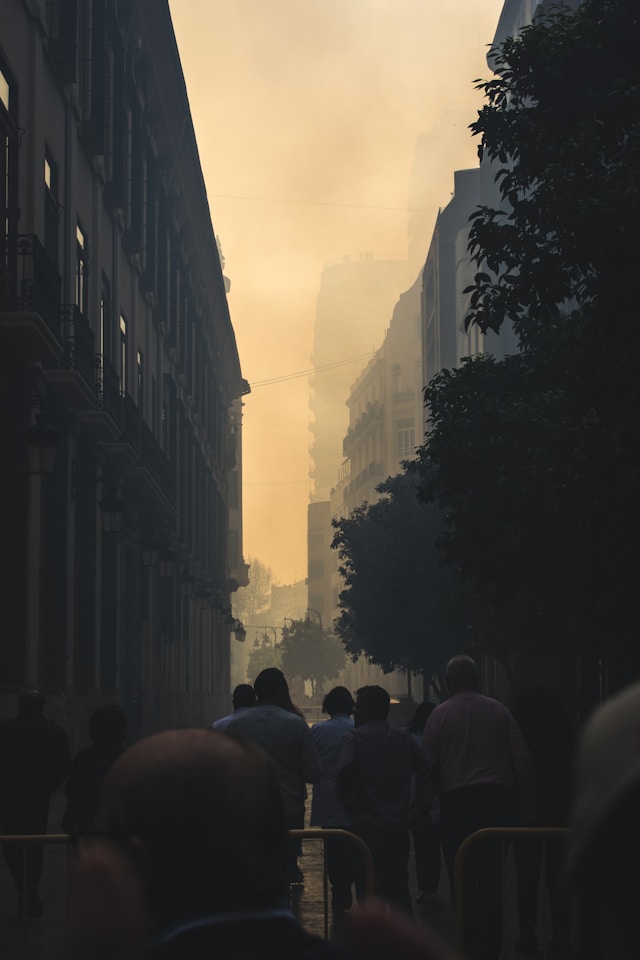
La Nit del Foc (The Night of Fire)
While technically the Night of Fire is on March 18, the nights of March 16 and 17 have similar fireworks displays near the Palace of Arts.
La Nit del Foc (The Night of Fire):
As Las Fallas nears its grand finale, Valencia lights up the sky with La Nit del Foc, the city’s most jaw‑dropping fireworks show. Expect cascading colors, booming bursts, and an electric atmosphere that’ll have you cheering “¡Olé!” all night long.
Timing & Tradition:
Held on the eve of the final Cremà, La Nit del Foc is the pyrotechnic crescendo of Las Fallas. Families, friends, and festival-goers gather by the riverbanks, revving up for one last, dazzling celebration before the grand burn.
Los Castillos & Prime Viewing:
The sizzle and sparkle of Los Castillos (the big castle-style fireworks) are best enjoyed from the Gargoyle Bridge (Montolivete Bridge) beside Gulliver Park in El Río. From here, you get a panoramic view of Valencia’s skyline lit up like a firework tapestry—pure festival magic!
The Valencia Extra news site gives a breakdown of the “Castillo” schedule:
Sunday, March 16
11:59 PM – Fireworks display in the Turia Gardens, opposite the Palau de les Arts and near the Montolivete Bridge
“Traditional and Unusual Castle” – by Vulcano Fireworks
Monday, March 17
11:59 PM – Fireworks display in the Turia Gardens, opposite the Palau de les Arts and near the Montolivete Bridge
“From Valencia to the World” – by Tamarit Fireworks
Tuesday, March 18
11:59 PM – LA NIT DEL FOC, grand pyrotechnic show in the Turia Gardens, opposite the Palau de les Arts and near the Montolivete Bridge
“Light, Fire, and Colors” – presented by Hermanos Caballer Fireworks
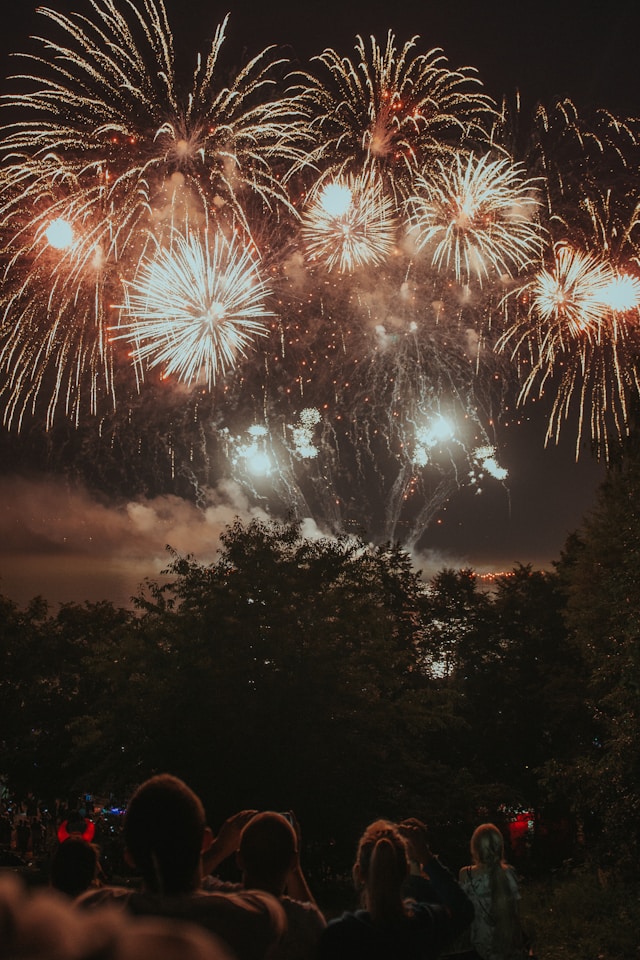
Parades, Costumes, and Traditional Dress
Las Fallas parades are a vibrant kaleidoscope of color and culture! Local falleras and falleros don dazzling traditional Valencian garb. Embroidered silk dresses, lace mantillas, and tailored waistcoats. Processions wind through the streets as neighbors proudly showcase their heritage, weaving centuries-old style into modern festival fun.
Flower Offerings to La Virgen de los Desamparados
One of Las Fallas’ most heartfelt moments is the Ofrenda de Flores. Thousands of participants carry fragrant bouquets through Valencia’s streets to build an enormous floral mantle at Plaza de la Virgen. Draped in petals and devotion, this living tapestry honors La Virgen de los Desamparados, blending faith, community, and stunning visual beauty.
Music Here, Music There, Music Everywhere
Day or night, Las Fallas pulses to the rhythm of marching bands in every barrio. Brass, drums, and woodwinds pour lively tunes into the streets, turning corners into impromptu dance floors. From sunrise mascletàs to midnight cremàs, music fuels the festival’s nonstop energy, ensuring there’s never a dull—or silent—moment in Valencia!
If you rent an airbnb, hotel, or hostel room, see if it has a balcony where you can sip your coffee or agua de Valencia, and simultaneously wave at the marching band and costumed falleros passing by below on the street.
Practical Tips for First-Time Visitors
Where to Stay Hotels and rentals fill up fast during Las Fallas. Booking a few months ahead is necessary. For proximity to parades and fireworks, stay in Centro Histórico, but expect loud noise day and night. Ruzafa offers access to nightlife and restaurants. For quieter evenings, look into Benimaclet or Camins al Grau. Bring earplugs regardless of location.
Getting Around Walking is the easiest and most reliable way to get around Valencia during the festival. Many streets close for events, and traffic moves slowly. Public transit is crowded, especially mid-day. Comfortable shoes are essential.
What to Wear Expect variable weather. Mornings and afternoons may be sunny, but temperatures often drop at night. Dress in layers. Fireworks are frequent, so ear protection is recommended.
Safety Tips Fireworks are set off across the city, often without much warning. Stay behind barriers and follow instructions from volunteers. Debris and small fires can appear quickly, especially in crowded areas. Keep children close.
When to Arrive Fallas runs from March 15 to 19, but events begin earlier. Arriving by March 13 allows time to see sculpture installations and smaller gatherings before the main days.
Budgeting Core events like parades and fireworks are free. Lodging and dining costs increase during the festival. Save money by eating from street vendors. Buy your bocadillos (sandwiches) from a local bar or Mercat Central, and enjoy a picnic at the Rio Turia (the main park that shoehorns the city).
Food to Try Popular local foods include paella, churros with chocolate, and bunyols. Try horchata from a local stand.
For Families Fallas is visually appealing for children but can be overwhelming due to noise and crowds. Bring headphones, plan breaks, and choose a central meeting point in case anyone gets lost.
Why You Shouldn’t Miss Las Fallas
Las Fallas is one of Spain’s most distinctive festivals. Its roots are in carpentry traditions, and it has evolved into a city-wide celebration of satire, public art, and community.
Photo by Victor Moragriega
Each March, Valencia fills with sculptures known as ninots—many of which are burned during La Cremà on the final night. During the day, mascletàs shake the ground with coordinated fireworks. At night, the city lights up with parades, music, and fire shows.
The festival is a mix of serious craftsmanship and humor. The sculptures often comment on politics, media, and society. Neighbors work together to build their fallas and organize events. Visitors quickly become part of the energy.
Many who attend remember the event not just for the spectacle, but for the sense of participation. Las Fallas is a chance to see a city transformed by art and collective effort.
If you're planning to visit Spain in March, Valencia should be on your list. For travel updates and event schedules, check Valencia’s official tourism site and save the Fallas festival map to your Google maps app.
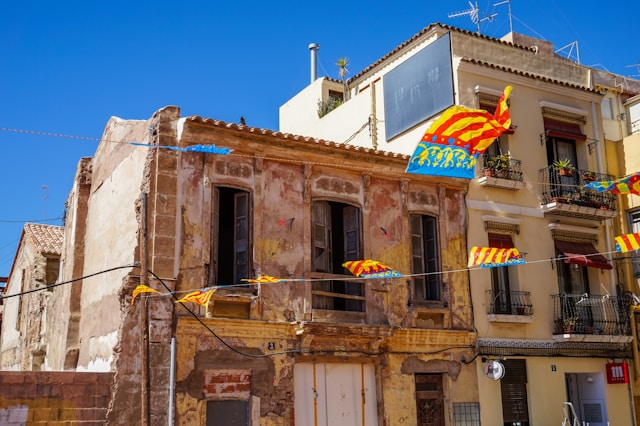
Sustainability, Controversy, and the Future of Las Fallas
Las Fallas generates significant waste through wood, paint, and fireworks. The environmental impact has raised concerns in recent years, especially around air quality and materials used in sculpture construction. In response, some artists and organizers are shifting toward biodegradable and recycled materials, such as alternatives to polystyrene and the use of water-based paints.
Each year, debate continues about whether the burnings are a cultural necessity or unnecessary waste. Supporters view the final act of burning as a meaningful tradition, while critics argue it clashes with environmental priorities. As a compromise, certain ninots are preserved in museums, and strict safety and emissions standards guide the use of pyrotechnics.
The COVID-19 pandemic pushed the festival to adapt with smaller installations, virtual experiences, and streamed events. These adjustments opened new possibilities for how Fallas can evolve while remaining accessible and relevant.
Organizers continue to test innovations like drones for light shows, more efficient fireworks, and digital tools to broaden audience engagement. Sustainability is becoming a core consideration in how Fallas is planned and executed.
Efforts to reduce impact do not remove the essence of the festival. Instead, they reflect how tradition can shift while still honoring its cultural roots.
FAQ: Your Ultimate Guide to Surviving Las Fallas!
1. What is Las Fallas?
Las Fallas is an annual festival in Valencia known for its artistic sculptures, fireworks, and community events. Neighborhood groups build large satirical sculptures called ninots, many of which are burned on the final night, La Cremà, March 19.
2. When does it take place?
The main festival dates are March 15–19, but preparations and smaller events start earlier in the month. Arriving by March 13 lets you see the full process of sculpture installation and early performances.
3. What is a Mascletà?
A mascletà is a daytime firework display designed for sound rather than visuals. It takes place daily at 2 PM in Plaza del Ayuntamiento. The sound is extremely loud and intense.
4. What’s typical to eat during the festival?
Local favorites include paella, churros with chocolate, and bunyols (fried pumpkin dough). These are widely available from both restaurants and food stands.
5. Should I bring earplugs?
Perhaps. Fireworks happen frequently and can be extremely loud, especially during mascletàs and evening displays. Probably best to use earmuff type headphones instead of earplugs for sleeping. Local Valencianos tell me that those little earplugs may not help, and that the real experience is feeling the power and noise of the Mascletà. Perhaps put some distance between yourself and the ground zero of the fireworks display. If you are super sensitive to noise, you may consider some form of ear protection.
6. Is La Cremà the only event with fire?
No. Most neighborhoods burn their sculptures on March 19. The largest display is in the city center around midnight, but smaller local events happen throughout the evening.
7. Is it safe to get close to the sculptures?
View sculptures from a safe distance. Crowds can become dense, and volunteers will clear the area before any fires begin.
8. Can families attend?
Yes, but be prepared. The noise level and crowds may be difficult for some children. Bring noise protection and plan regular breaks.
9. Are there sustainable Fallas?
Some neighborhoods use recycled or biodegradable materials and lower-emission fireworks. Look for signage or ask locals about environmentally focused installations.
10. Why visit Las Fallas?
Las Fallas combines public art, tradition, and local participation. It’s a unique chance to experience Valencian culture in a setting that values creativity and community involvement.
Conclusion: Feel the Flames
Las Fallas is more than a celebration—it’s a reflection of how tradition, civic pride, and creative expression can shape public space. Whether you’re watching artisans build ninots or standing in a plaza surrounded by fire and sound, what stands out is the scale of community involvement. This isn’t a show for tourists; it’s a cultural event deeply rooted in local identity.
For those visiting Spain in March, Valencia offers a unique experience that blends art, history, and public participation. So what are you waiting for? Start dreaming and planning for the experience of a lifetime. Get in on the fun and locura that is Las Fallas!
Watch this related Dreaming Spanish video on Fallas of Valencia - Beginner Spanish - Spanish Festivals #3.
Make your Speaking Spanish Dreams Come True. START LEARNING SPANISH TODAY!
Featured author: Joe Bommarito
Joe is a language teacher and freelance writer. He’s taught students in the USA, Korea, Spain, and on iTalki. Two of his favorite activities are walking in the sun and listening to podcasts. If your paths cross, he’d love to invite you to a tasty cuppa coffee. Click here to get in touch with him.

